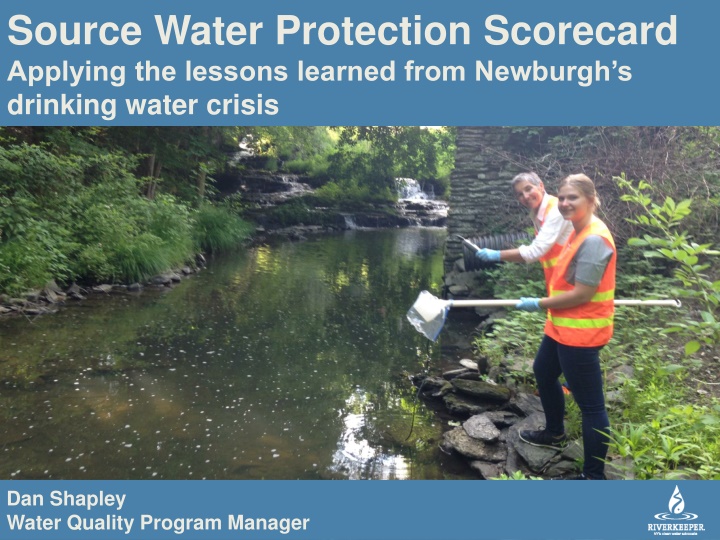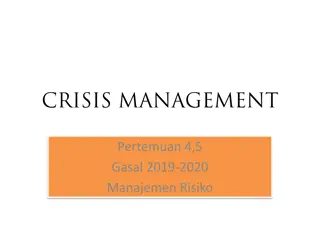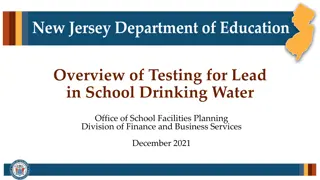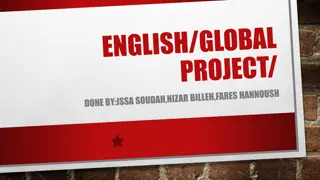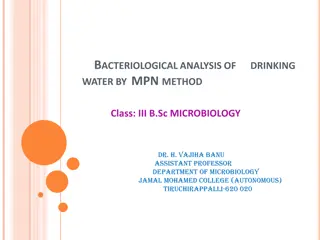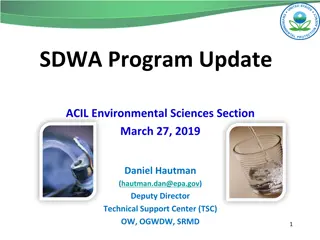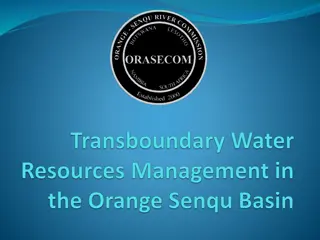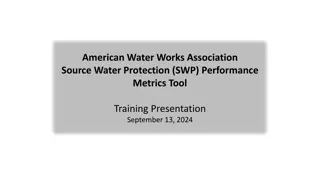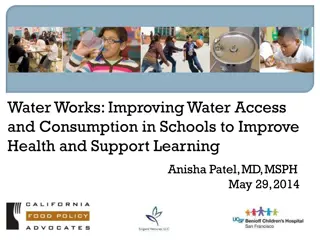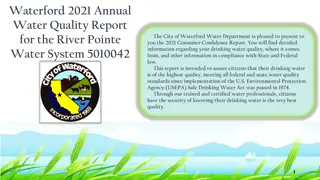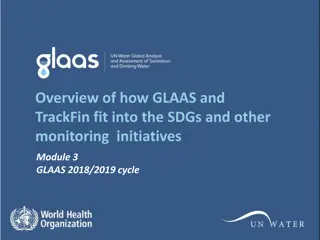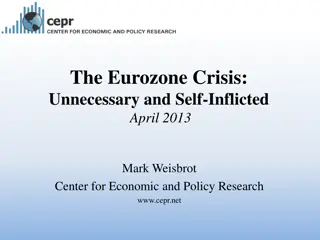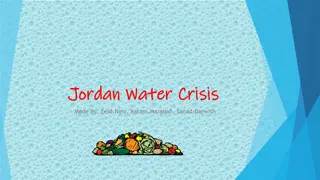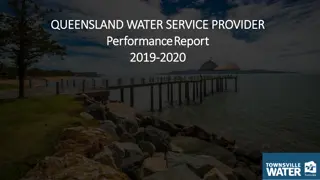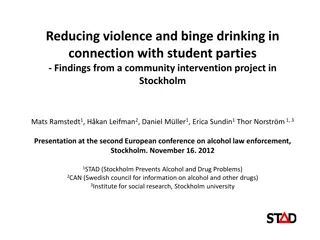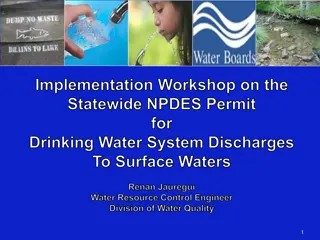Lessons Learned from Newburgh's Drinking Water Crisis
The drinking water crisis in Newburgh, involving the exposure of 29,000 people to toxic chemicals for potentially decades, highlights the importance of source water protection. The contamination of the Washington Lake reservoir, inadequate source water assessments, and the lack of protection programs contributed to this crisis. The images and information provided shed light on the failures that led to the situation and emphasize the need for stringent regulations and proactive measures to safeguard drinking water sources.
Download Presentation

Please find below an Image/Link to download the presentation.
The content on the website is provided AS IS for your information and personal use only. It may not be sold, licensed, or shared on other websites without obtaining consent from the author.If you encounter any issues during the download, it is possible that the publisher has removed the file from their server.
You are allowed to download the files provided on this website for personal or commercial use, subject to the condition that they are used lawfully. All files are the property of their respective owners.
The content on the website is provided AS IS for your information and personal use only. It may not be sold, licensed, or shared on other websites without obtaining consent from the author.
E N D
Presentation Transcript
Source Water Protection Scorecard Applying the lessons learned from Newburgh s drinking water crisis Dan Shapley Water Quality Program Manager
#50onHudson Defend the Hudson River and its tributaries Restore polluted waterways Enrich communities
What is going on in Newburgh? 29,000people exposed to toxic chemical for years probably decades Washington Lake reservoir remains contaminated Long-term and expensive remediation, treatment and health programs starting Commitment to new Source Water Assessment
How could this happen? Discharges regulated to Class C and D standards (Clean Water Act) Firefighting foam discharges prohibited but not monitored (CWA) Source Water Assessment didn t accurately map watershed or identify threats (Safe Drinking Water Act) No Source Water Protection Program (Safe Drinking Water Act) Wetlands not designated for protection (Environmental Conservation Law) Open lands not identified for protection (ECL) Newburgh lacks jurisdiction to protect its drinking water (Public Health Law)
Bard Colleges Source Water Assessment Summary This assessment found an elevated susceptibility to contamination for this source of drinking water. The amount of pasture in the assessment area results in a high potential for protozoa contamination. Non-sanitary wastewater discharges may also contribute to contamination. There is also noteworthy contamination susceptibility associated with other discrete contaminant sources, and these facility types include: mines and landfills. Finally, it should be noted that relatively high flow velocities make river drinking water supplies highly sensitive to existing and new sources of microbial contamination.
Town of Red Hook Source Water Assessment Summary The source water assessment has rated our water source as having an elevated susceptibility to microbial, nitrates, industrial solvents and other industrial contaminates. These ratings are due primarily to the close proximity of the wells to permitted discharge facilities (industrial/commercial facilities that discharge wastewater into the environment and are regulated by the state and/or federal government) and the residential and agricultural land use and related activities in the assessment area. In addition, the wells draw from a gravel water bearing soil and overlying soils may not provide adequate protection from potential contamination due to flooding. The county and state health departments will use this information to direct future source water protection activities. The source water assessment summary for your system is available by calling the Water Department office at 845-758-4608 and requesting a copy.
Bard Colleges Score (DRAFT) (DRAFT)
Next Steps ? Thoroughly complete Scorecard for Bard (SKWC?) Complete sub-watershed Scorecards for Red Hook Village, Water District No. 1, Red Hook Residential Center, Mountain View Mobile Estates, and/or others (SKWA, CAC?) Seek technical advice from Estuary Program, DEC, DOH etc. Report results widely especially to state and federal representatives (SKWA, Red Hook Village/Town, Riverkeeper) Lobby for more resources for Source Water Protection (Riverkeeper and a coalition of the willing)
Water quality monitoring team John Lipscomb , Dan Shapley, Jen Epstein Riverkeeper Dr. Greg O Mullan CUNY Queens College Dr. Andrew Juhl, Carol Knudson Columbia University Lamont-Doherty Earth Observatory Jason West, Beckett Lansbury Part time, grant-funded
2016 Partners The Ashokan Center, Bard College, Brooklyn College, Columbia University s Lamont-Doherty Earth Observatory, Columbia-Greene Trout Unlimited, Cornell University, CUNY Queens, Environmental Protection Fund (Hudson River Estuary Program and Mohawk Basin Program), Groundwork Hudson Valley, HSBC, Hudson River Improvement Fund, Hudson River Maritime Museum, IDEXX, Jarrett Engineers, John Jay College, JSA Financial, LaGuardia Community College, Leon Lowenstein Foundation, Madison-Oneida BOCES, Middleburgh High School, Montgomery Conservation Advisory Council, New York City Water Trail Association and partners, New York Sea Grant, Ossining High School, Philipp Family Foundation, Pleasantville Conservation Advisory Council, Pocantico River Watershed Alliance, Rochester Environmental Conservation Commission, Rocking the Boat, Roe Jan Watershed Association, Rosendale Commission for the Conservation of the Environment, Sarah Lawrence College Center for the Urban River at Beczak, Saw Kill Watershed Community, Saw Mill River Coalition, Sparkill Creek Watershed Alliance, SUNY Cobleskill, The River Project, U.S. Geological Survey, U.S. Environmental Protection Agency Office of Research and Development, Wallkill River Watershed Alliance, Wawarsing Environmental Conservation Commission, Westchester Community Foundation, Yonkers Paddling and Rowing Club, and many Riverkeeper members
Dan Shapley dshapley@riverkeeper.org 914-478-4501 x226 riverkeeper.org
